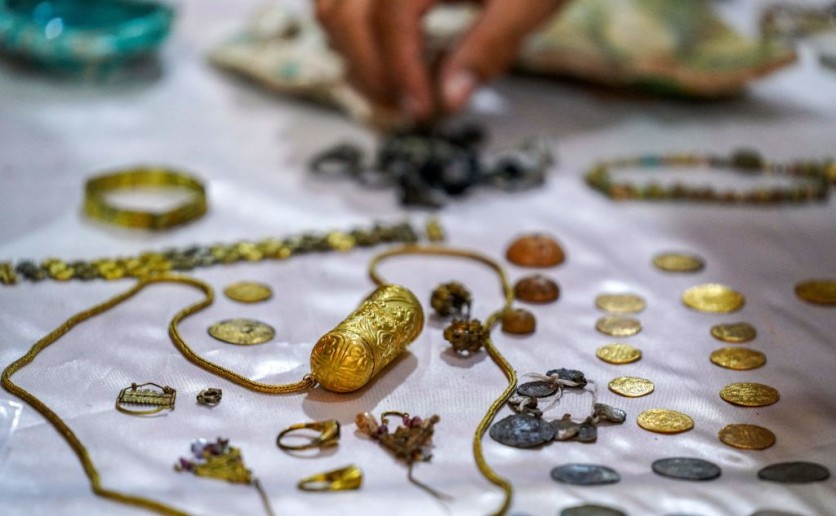In a surprising archaeological find, researchers have unearthed a collection of precious gems that were lost by ancient Romans in the bathhouses of Carlisle, England, according to a report by National Geographic.

Treasure Trove of Gemstone Intaglios
The excavation of the site's drainage system revealed a treasure trove of intricately carved gemstone intaglios, providing a glimpse into the opulence enjoyed by wealthy bathers during the third and early fourth centuries A.D.
These gems, which were once set in rings, had come loose due to the heat and humidity of the baths, eventually finding their way into the drains.
Lead archaeologist Frank Giecco explains that the discovery sheds light on the beliefs and values of the Roman elite during that period.
Among the 36 intaglios recovered, some depict Mars, the god of war, while others showcase the goddess Diana, who was revered for her protective role during childbirth, or Fortuna, the deity associated with luck.
The presence of these engravings provides a unique glimpse into the spiritual and mythological inclinations of the affluent individuals who frequented the bathhouse.
The excavation has also yielded monumental sculpted heads, with one of them potentially representing the goddess Fortuna. These colossal heads, alongside the gemstone intaglios, offer a captivating insight into the grandeur and cultural significance of the ancient Roman bathhouse.
Further excavation of the southern portion of the site's bathhouse is currently underway, raising hopes of discovering even more remarkable artifacts within the remaining sections of the drainage system.
Although the researchers have found favorites among the gems, such as the mouse intaglio, Giecco admits that discoveries continue to amaze him. With each passing month, he anticipates unearthing additional exquisite pieces that further enrich our understanding of the ancient Roman civilization.
Read Also : French Archaeologists Uncover Ancient Roman-era Monumental Complex from the 2nd-3rd Century AD
Window to the Roman Elite
The remarkable findings from the bathhouse site in Carlisle have ignited excitement among archaeologists and history enthusiasts alike.
The engraved gemstone intaglios provide a tangible connection to the luxurious lifestyle enjoyed by the Roman elite, offering a glimpse into their beliefs, values, and artistic preferences.
As the excavation efforts continue, there is the tantalizing possibility of unearthing even more lost treasures, further unraveling the secrets of the ancient Romans and their opulent bathhouse rituals.
Archaeological finds from the ancient Romans are exciting because they provide tangible links to a remarkable civilization that greatly influenced Western culture.
These artifacts offer glimpses into a bygone era's daily lives, beliefs, and artistic achievements, fostering a deeper understanding of our shared human history.
Each discovery adds a piece to the puzzle, allowing us to reconstruct the past and gain insights into ancient Rome's customs, technologies, and social structures.
Related Article : Authenticated Ancient Roman Coin Reveals a Previously-Unheard Emperor from the 260s CE

ⓒ 2025 TECHTIMES.com All rights reserved. Do not reproduce without permission.




